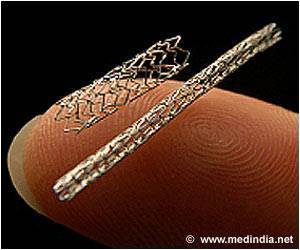Dangerously abnormal heart rhythms can be detected by a new type of defibrillator implanted under the skin. It deliver shocks to restore a normal heartbeat without wires touching the heart.

"Defibrillation has repeatedly proven to be a great asset in prolonging the lives of cardiac patients, but there are still some risks to address," said Martin C. Burke, D.O., senior author of the study and a professor of medicine and director of the Heart Rhythm Center at the University of Chicago. "This new system was developed over a dozen years to combine some of the best aspects of traditional implanted ICDs and external defibrillators." In the 33-site study, 314 of 330 patients (average age 52) evaluated had the S-ICD® implanted.
During an average 11-month follow-up, 21 patients spontaneously developed 38 episodes of ventricular fibrillation or ventricular tachycardia. All were successfully restored to a normal heart rhythm. In addition, 41 patients (13.1 percent) received shocks that were inappropriate because they weren't preceded by a dangerous heart rhythm. The study surpassed goals set by the U.S. Food and Drug Administration for evaluating the safety and effectiveness of the new device:
- Ninety-nine percent of the S-ICD® patients remained free of complications 180 days following implantation, compared with a 79 percent goal.
- When tested by a purposely-induced abnormal rhythm following implantation, the S-ICD® was 100 percent effective at consistently detecting and reversing ventricular fibrillation. The FDA goal is 88 percent.
The S-ICD® has been available in Europe and New Zealand since 2009 and received FDA approval in the United States in 2012. Participants in the study, along with new patients, will be followed to assess the performance of the new device over time. Patients with certain types of pacemakers, and those with symptoms related to a slow heartbeat, should not use an S-ICD®. Data from the registries will be used to determine the range of patients who might be helped by the device, including those on dialysis and those with birth defects involving the heart. "The S-ICD® is not a replacement for other defibrillators," Burke said. "For some patients it will be ideal, for others inappropriate, and the vast proportion in the middle will be able to select the type of system they want," Burke said. A comparison between a traditional ICD and the S-ICD® is underway.
Source-Eurekalert
 MEDINDIA
MEDINDIA



 Email
Email










